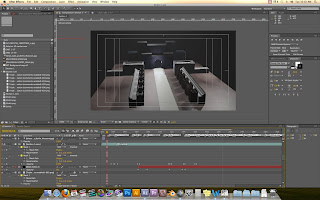 Are you using a DSLR and an external audio recorder, such as the Zoom H41 recorder? Well, chances are you've probably had times where you forgot to slate a shot. This post will teach you how to rescue shots that were not synced with a slate.
Are you using a DSLR and an external audio recorder, such as the Zoom H41 recorder? Well, chances are you've probably had times where you forgot to slate a shot. This post will teach you how to rescue shots that were not synced with a slate.For beginning filmmakers, slating a shot is when someone puts a clapper in front of the camera and claps it to make a sound that will help editors sync the externally recorded sound to the video later. See this article for more information.
Well, here's an easy trick I use to sync the audio of the my external sound recorder to my camera video in post-production.
Sync Using the "Sssss" or "Es" sounds
Actually, you can use a lot of harsh consonant sounds, but "Sssss" and "Es" sounds work well because they are very unique and typically are very harsh sounding, if you are listening to them, compared to many other consonants (letters that aren't vowels) sounds.
Wait for the speaker to say one of these harsh sounds, and advance frame by frame until you find the tip top beginning of these sounds on both the in-camera audio and the external sound recorder audio. Create in and out points in your editing software, and when you've placed these clips in a timeline, then align the in points of them to each other. Of course, you could also use markers, and align the markers instead. Then, you can change the clips' editing to be how you want, now that you have the audio and the video in sync.
Careful, Though...
This is a useful rescue method, but it should not be an excuse to be lazy. Keep using the slate. You don't even need an expensive clapper. Just clap in front of the camera with your hands and look for the moment your hands meet to sync the clap sound in the audio. This is probably the most precise way of syncing sound.
Try this way out. You might be surprised to find that often times that modern DSLR cameras, the sound is off by one frame. Mine was. Enjoy!
Photo by Matt Batchelor on Flickr.com








